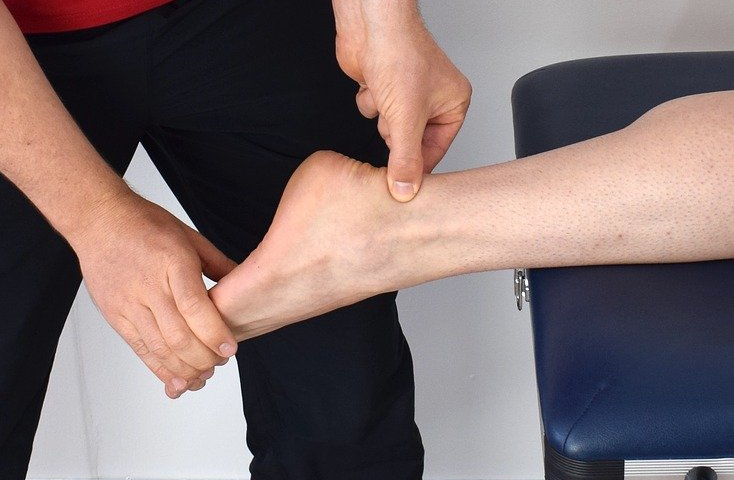The Common Causes of an Injury to the Achilles Tendon

Signs That it’s Time For You to Visit a Podiatrist in Houston!
February 3, 2022
Why Should You Visit a Podiatrist Instead of a General Physician?
February 25, 2022The Achilles tendon is the springy tissue at the back of your ankles, just above the heel, and is the largest tendon in the human body. It extends from the heel of the foot to the calf muscles. It allows the foot to point towards the floor and rise up. Though commonly seen among active athletes, it is a fairly common injury that can happen to anyone. It can be mild or moderate, depending on how it feels. If the pain is unbearable, your Achilles tendon may be partially or totally ruptured.
Achilles tendinitis is another common injury that occurs due to an inflamed tendon. It can be further categorized into two types based on the parts it affects. The most common sign of an injury is pain above the heel, especially while stretching or standing on the toes. The area would feel softer, tender, or swollen. The Achilles tendon is likely torn if you hear a pop or snapping noise. There could be bruising and swelling as well. If you are experiencing such symptoms in Houston, TX, you may want to get it checked by a doctor who performs Achilles tendon repair in Houston.
Common Causes
Achilles tendon injuries are commonly seen when people do something quickly. The sudden movement of the feet and pivoting causes stress on the tendon, which causes it to show issues. Some common causes are:
- Running
- Gymnastics
- Dancing
- Sports
- Improper landing on the feet
- Twisting of ankles
- Other causes that are not specific activity-related are called repetitive stress injuries. These occur if the Achilles tendon is stressed repeatedly due to high-impact activities.
Common Risks
Though it can happen to anyone, certain groups of people are at a higher risk of getting an Achilles tendon injury, such as those who –
- Frequently wearing high heels
- Have flat feet or fallen arches
- Have leg muscles and tendons
- Have bone spurs
- Do intense exercises or change exercise style, or work out on uneven surfaces
- Wear improper shoes for the physical activity
- Take certain types of medications
- Certain conditions such as diabetes, gout, lupus, arthritis
Treatment and Recovery
Injury to the Achilles tendon is often misdiagnosed as a sprained ankle. Doctors perform several physical tests and scans to determine the cause and extent of the damage correctly. Most minor issues can be treated with painkillers and rest, along with other home remedies. These include resting your leg, using a cold compress, using bandages to compress your leg, anti-inflammatory medicines and painkillers like ibuprofen, using heel lifts, and simple exercises. You may also be given casts to wear for a few weeks.
For severe cases, the doctor might recommend surgery. If the Achilles tendon is torn, then surgery within four weeks of injury might be the only option. The success rates of these surgeries are incredibly high, with chances increasing with reducing age and increasing activity. It may take months for the injury to heal fully, after which you can be active again. However, consult your doctor about the dos and don’ts post-recovery. Once your injured leg feels as strong as the uninjured one, it is a sign that you have recovered. Till then, take things slow.
If you are in Houston, TX, and are experiencing foot issues, call us and schedule an appointment to get the most reliable consultation with our doctors.



